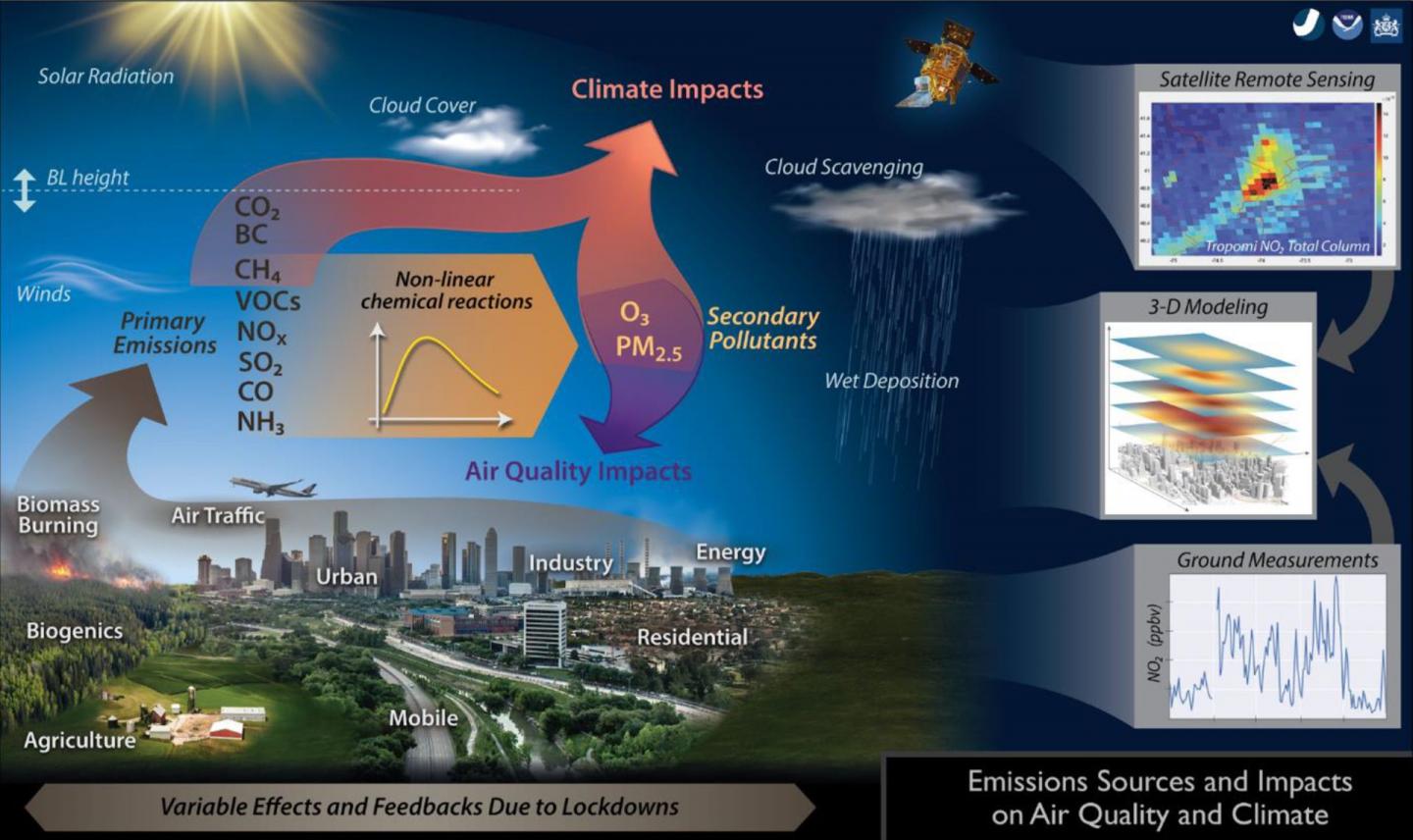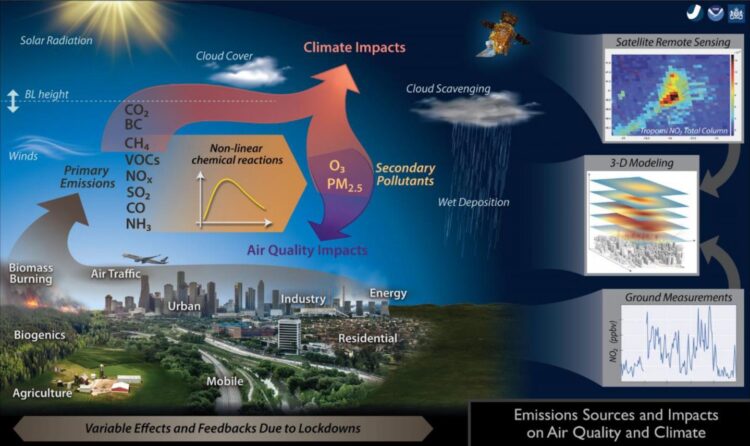
Credit: Copyright: Forschungszentrum Jülich
One consequence of the coronavirus pandemic has been global restrictions on mobility. This, in turn, has had an effect on pollution levels in the atmosphere. Researchers from across the world are using this unique opportunity to take measurements, collect data, and publish studies. An international team led by Forschungszentrum Jülich’s Institute of Climate and Energy Research – Troposphere has now published a comprehensive review providing an overview of results up to September 2020. The study also has its own dedicated website, where additional measurement data can be added to supplement and refine existing research results. At the same time, this collection of data allows scientifically substantiated predictions to be made about the pollution levels of future mobility scenarios.
The meta-analysis was coordinated by Prof. Astrid Kiendler-Scharr, director at Jülich’s Institute of Climate and Energy Research – Troposphere. The analysis covers the measurement data of around 200 studies from the first seven months following the onset of the pandemic. It focuses on the following air pollutants: nitrogen dioxide, particulate matter, ozone, ammonia, sulfur dioxide, black carbon, volatile organic compounds (VOCs), and carbon monoxide. A third of the studies take into account the prevailing meteorological situation when calculating the influence of lockdowns on the air composition. The Government Stringency Index (SI) – summarizing the severity of local shutdown measures in a number that can be compared at international level – acted as a reference value.
A key finding of the analysis is that lockdowns, which have the sole aim of slowing down the infection rate, are also reducing the global pollution of the atmosphere with nitrogen dioxide and particulate matter – the higher the SI, the greater this impact. However, this only applies to pollutants that primarily have an anthropogenic origin, i.e. are directly emitted by humans, especially in the field of mobility. In contrast, ozone levels increased. This increase was a result of atmospheric chemical processes caused by reduced nitrogen oxide levels in the air.
The study also highlights current gaps in the data collection and the need for further research. The authors are therefore of the opinion that the period of analysis should be extended to cover the entire year of 2020. The scientists place a particular emphasis on hydrocarbons, which have so far only been examined sporadically in studies, and on extended analyses looking at the impact of emission changes on the climate.
An important addition to the meta-analysis is a database that can be accessed via a website (COVID-19 Air Quality Data Collection). It contains all data from the study on pollution levels, including data on pollutions levels in individual countries. Researchers can also find a list of publications to date and thus obtain a quick overview of previous studies.
The website also invites scientists to present data from their new studies and to thus become part of the reference system. It therefore acts as a “living version”, with the presentation of collected results being constantly refined. Similarly, there are plans to further develop the data collection to include measurement results and the analysis of other pollutants that are not part of the current canon, for example hydrocarbons.
The important data could also form the basis for better assessments of the impacts on atmospheric chemistry in future scenarios. This includes a considerable, long-term reduction in pollution levels for a comprehensive transition to electromobility.
###
Media Contact
Erhard Zeiss
[email protected]
Related Journal Article
http://dx.





